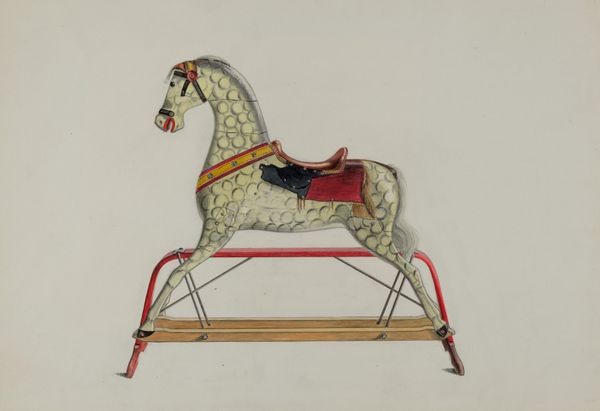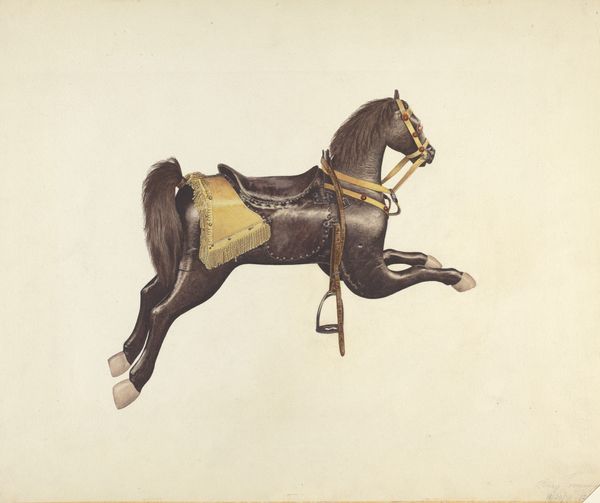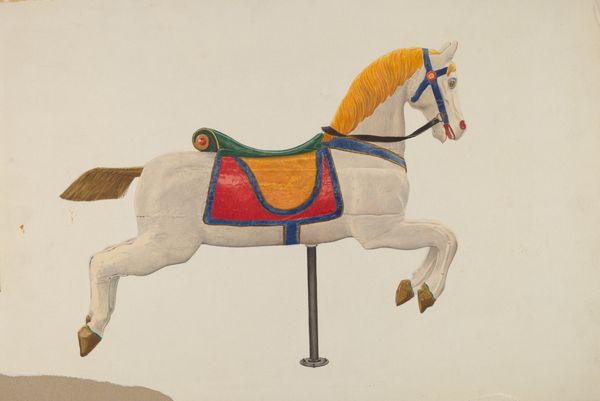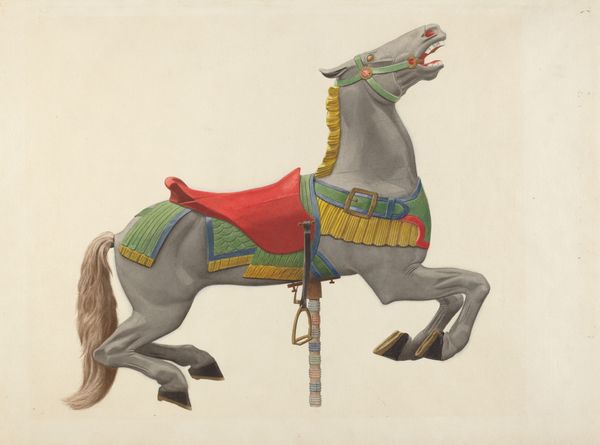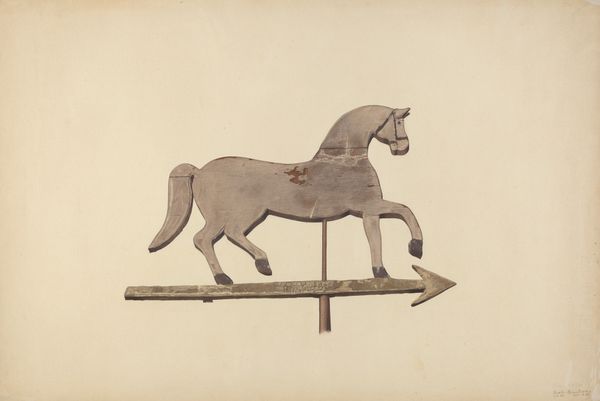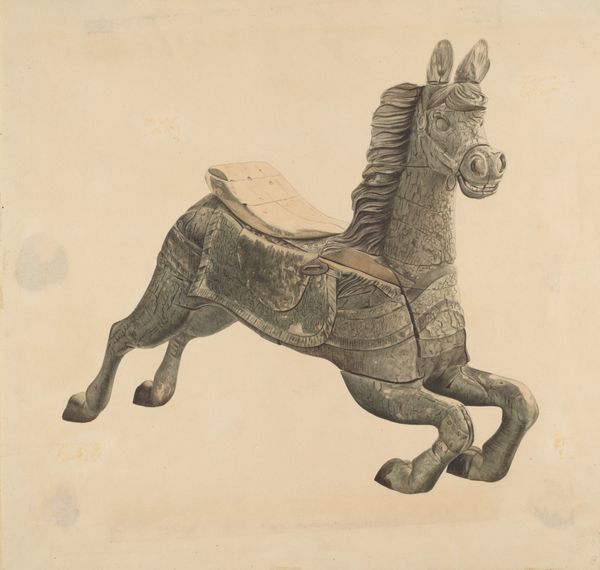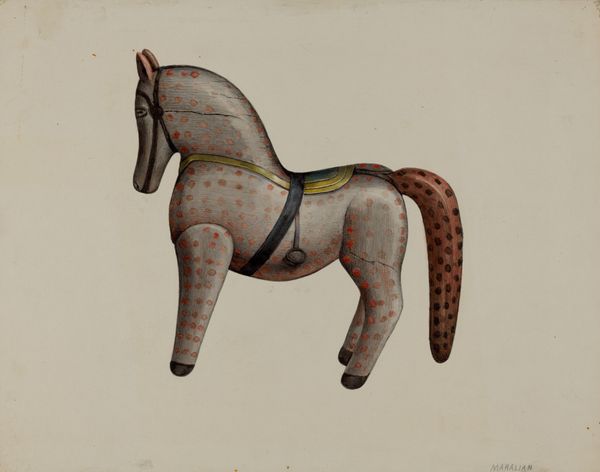
drawing, watercolor
#
portrait
#
drawing
#
water colours
#
figuration
#
watercolor
#
academic-art
#
watercolor
Dimensions: overall: 40.9 x 50.9 cm (16 1/8 x 20 1/16 in.) Original IAD Object: 40" high; 40" long; 17" wide
Copyright: National Gallery of Art: CC0 1.0
Curator: Looking at Ernest A. Towers Jr.’s watercolor piece, “Hobby Horse,” created around 1939, I am immediately struck by how wistful it feels. Editor: Yes, a pang of nostalgia. The rocking horse— a powerful symbol in itself. Its stasis versus a horse's implied motion really does get you thinking about the promises and confinement inherent to childhood. Curator: Precisely. Rocking horses are archetypes in many cultures. This isn't just about childhood innocence; it signifies dreams, ambitions, and that primal urge to move beyond one's current state, captured within the limited arena of youth. It presents as a symbol for a privileged childhood in particular. Editor: The almost photographic detail amplifies that feeling, right? There’s an almost clinical detachment to how the watercolor captures light and shadow, highlighting textures that, while pleasing, lend it a sense of remove, or perhaps even artificiality. The image captures the toy and none of the child. Curator: I agree, and I wonder if that choice echoes anxieties prevalent in pre-war America, an obsession with controlling outcomes as seen with anxieties about child rearing? What might the deliberate decision to portray the object separate from its user suggest about larger societal shifts? Perhaps Towers intentionally evokes the inherent tensions between aspirations, societal pressures, and the illusion of control. I find that especially evident in the horse’s stationary 'gallop'. Editor: Fascinating. Then again, given the rise of Freudian thought in the same period, do we see symbolism around early childhood fixations, given horses can signify untamed sexuality? The immobility of this horse might indicate something about the subject's anxieties surrounding repression. The detail almost reminds me of a scientific catalog entry. Curator: It certainly lends itself to varied interpretations. I am left with how such seemingly straightforward imagery holds deeply resonant ideas about history. Editor: Right, an image meant for child's play holds reflections about adulthood's concerns, then and now.
Comments
No comments
Be the first to comment and join the conversation on the ultimate creative platform.


